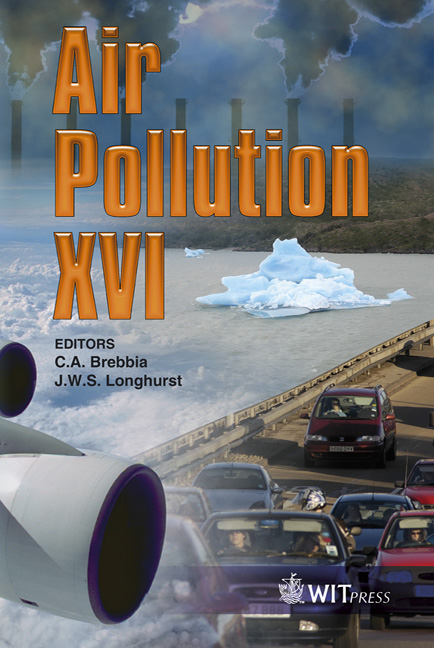Modelling Of Air Pollutants Released From Highway Traffic In Hungary
Price
Free (open access)
Transaction
Volume
116
Pages
7
Page Range
77 - 83
Published
2008
Size
996 kb
Paper DOI
10.2495/AIR080091
Copyright
WIT Press
Author(s)
Gy. Baranka
Abstract
The aim of study is to determine the CO and NO2 concentrations near Hungarian motorways. The expressway network in Hungary is comprised of 650 kilometres of motorway, 205 kilometres of clearways and highways as well as 188 kilometres of junction point sections. The CALINE4 dispersion model developed by the California Department of Transportation for predicting CO, NO2 concentrations near roadways was adapted at Hungarian Meteorological Service. The dispersion equation is based on an analytic solution of the Gaussian diffusion equation for a finite line source. This model was combined with a \“mixing zone” model segment. The \“mixing zone” is defined as the region over the road characterized by uniform emissions and turbulence. The model treats traffic as an infinite line source divided into a series of elements located perpendicular to the wind direction. Vertical dispersion parameters take into consideration both thermal and mechanical turbulence caused by vehicles. A CALINE4 roadway link is assigned an equivalent line source strength based on the product of a fleet averaged vehicle emission factor (grams of pollutant per vehicle per mile traveled) and vehicle flow rate (vehicles per hour). The CALINE4 requires relatively minimal input from the user. Input data are traffic volume, emission factors, roadway geometry, wind speed and direction, ambient air temperature, mixing height, atmospheric stability class and coordinate of receptors. Using CALINE4 dispersion model 1-hour and 8-hour averages CO and NO2 concentrations have been determined at the receptors within 500 meters of the Hungarian motorways and around the intersection links. Keywords: emission of road traffic, turbulence, diffusion processes, CALINE4 model, spatial distribution.
Keywords
emission of road traffic, turbulence, diffusion processes, CALINE4 model, spatial distribution.





